Orange wine has come a long way over the last decade and is now available in stores worldwide. Once an obscure wine, it has now grown to become a beloved mainstream favorite. But what exactly is orange wine, and where did it come from? In this article, we’ll delve into the essentials, including its unique taste and origins. Get ready for this this funky and delicious wine style!
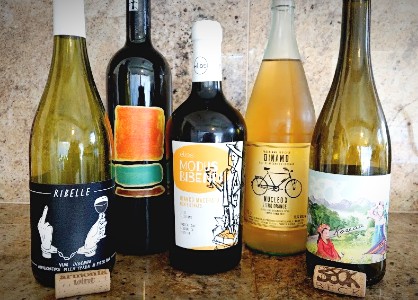
What is orange wine?
No, it’s not a wine made from oranges. It’s a pretty simple concept actually. Orange wine is a wine made from white grapes in a red style. In previous articles I have told you about how wine gets its color, this is the same for orange wine. You don’t need some special orange grapes to make orange wine. Actually, it can be made from any white grape. What makes it different from white wine is the grape juices are left in contact with the grape seeds and skins.
How It’s Made
The process of making orange wine is pretty much the same as making red wine. The grapes are crushed and put in a large fermentation vessel. Most commonly concrete or ceramic, though some great expressions are made with oak. The juices are left alone with their seeds and skins for anywhere from hours to a year. The more time the juice spends with the skins and seeds the more characteristics they impart on the final blend.
As the grape juices sit with the skins and seeds they extract color, body, and texture. Think of the skins and seed as the tea leaves and the juice as the water. This allows these white grapes to make wines that are a more rustic and natural expression.
Commonly made with little to no additives, this has been a selling point for orange wines. Winemakers will often forgo the use of added yeast, using only the wild yeast residing on the grape skins. You’ll see this labeled as “wild” of “spontaneous” fermentation, and personally I love it!
What does it taste like?
These wines are typically intensely aromatic. They are full of flavor, dry, and contain tannins. Floral, tropical, and zesty, commonly boasting flavors of nuts, fruit, honey, flowers, dried citrus, and sourdough. They are intense expressions of what the grape has to offer. A white wine with the guts of red, ready to combat a wide variety of food.
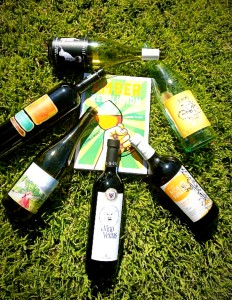
Who is responsible for this beautiful creation?
The idea has been around for centuries, dating back to as many as 5,000 years ago. Orange wine is actually one of the oldest forms of white wine. In areas such as the republic of Georgia (Not the state), Slovenia, and Greece orange wine has been making its way to tabletops for generations. Over the last 20 years, it has re-emerged as a hip contender in countries around the world.
Who is making great orange wine today?
The region on Friuli in Italy is arguably most responsible for pioneering orange wines return. Throughout Italy today they make beautiful expressions using Friulano, Pinot Grigio, and Ribolla Gialla. The style has taken roots throughout France and Spain and can be seen throughout Europe. You will find excellent New World representations in Oregon, New York, California as well as Australia and Chile.
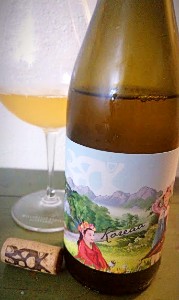
How it should be drank
The most important thing to note is not to put orange wine into a box. It is not white, red, or rosé. Orange wine is an experience of its own making. It is a style that stands on its own.
Due to the expressive nature of orange wine and the addition of tannins it should be served cool but not cold. The flavors of the wine will be more subtle when chilled and more expressive as it warms up. Serving them slightly warmer than a traditional white, around 50℉ seems to be a perfect balance.
A couple favorites
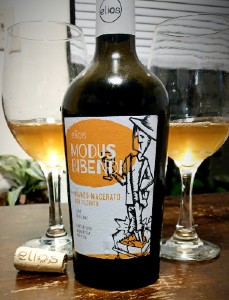
Elios Modus Bibendi Bianco Macerato
Made with equal parts Grillo, Catarratto, and Zibibbo and grown in clay. Fermented using natural yeast, the Grillo and Zibibbo are co-fermented and Catarratto is picked later and processed separately. After combining it is aged in stainless steel on its lees for 7 months. Bottled unrefined, unfiltered, and with a small amount of sulfur. The results is a medium-bodied dry wine boasting flavors of orange and stone fruit. Pure sunshine in a glass!
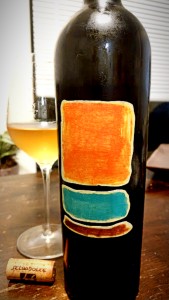
Pigato, Rucantù, Selvadolce, Liguria
Made using 100% Pigato, a native grape to the Liguria region. The grapes are handpicked and undergo spontaneous fermentation with indigenous yeast. It is macerated on the skin for a few days and then aged for 8 months in oak. An out of this world expression on orange wine with notes of mandarin orange, sea salt, apricot, almond, and just a touch of petrol. It can be more difficult to find in the US but is a must-try given the opportunity.